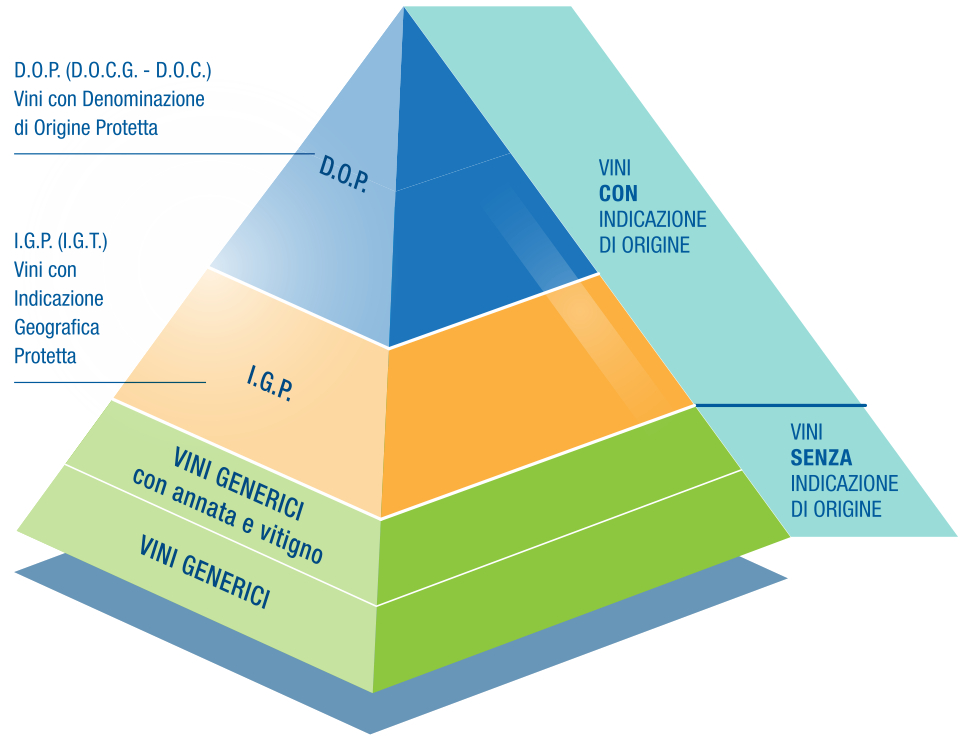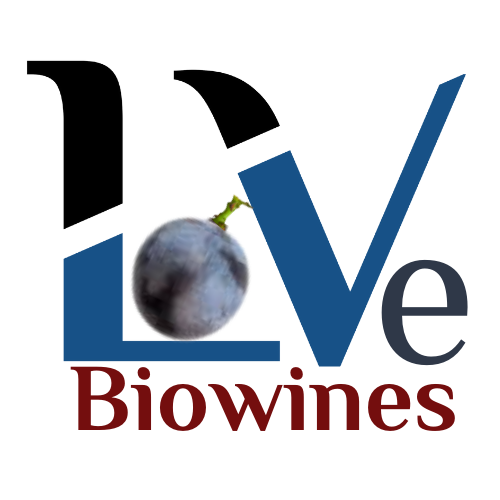DENOMINATION
Historical stages that led to the current denomination (Source: FederDoc)
In 1930, the Ministry of Agriculture introduced a first qualitative classification of wine, defining three types:
- Special Wines
- Superior Wines
- Fine Wines
1963 Issue of Presidential Decree no. 930 on the protection of the Designations of Origin of Wines. The first national measure to regulate wine production, with which the concept of “Denomination of Origin” was established. This regulatory act defined with precise rules the production and marketing of wines through the “Production Regulations”, the establishment of special registers and the system of reporting the quantities of grapes produced to be destined for the production of a given denomination. This Presidential Decree will also establish a classification of this type:
- Simple Designation of Origin wine
- Wine with Controlled Designation of Origin
- Wine with Controlled and Guaranteed Designation of Origin
In 1992 Law no. 164/92 was introduced, which introduced a series of innovations:
- IGT Introduction
- The harvest choice, which allows the production of the same vineyard to be used for several Denominations of Origin
- The recognition of sub-areas, i.e. smaller areas within the Denomination of Origin
- Compulsory chemical-physical analysis before marketing
With Law 164/92 we arrive at what is the “Wine Pyramid” that we know today and that we use in Italy:
- DOCG wines
- DOC Wines
- IGT Wines

In 2008, the European Community decided to implement a reform process within the wine sector. The work thus saw the birth of European Regulation 479/2008, which introduced some innovations regarding production, labeling, marketing and denomination at an international level. The aspect that perhaps interests us most, however, is the simplification of the “wine pyramid” that we have just seen, especially to protect as much as possible the final consumer, who is a wine lover, but not always an expert in the sector.
The Regulation therefore provides for only three categories:
- PDO wines
- IGP Wines
- Generic wines (with or without vintage and grape variety)
The main simplification can be found, as it is easy to guess, in wines with an indication of origin: PDO and PGI. (It is correct, however, to continue to talk about DOCG, DOC, IGT and table wines, as Member States can continue to use their traditional classifications referring to Designations of Origin and Geographical Indications.

DOCG – DOC – IGT – Table Wines (Source FederDoc)
In general, it is not certain that a D.O.C.G. wine is better than a D.O.C. or an I.G.T. PDO wines must comply with a specific specification, which certifies the standards of that specific bottle, but nothing prevents an IGT wine from being better than a DOCG, also because personal taste has a great influence. A D.O.C.G. or D.O.C. wine, however, is also synonymous with quality, as well as strict controls that are carried out before being put on the market, which guarantee very high levels of production. D.O.C.G. wines have high intrinsic qualities and in order to obtain this Denomination they must have been D.O.C. for at least 5 years.
They are those wines without any geographical reference. There are no rules for the variety of grapes used, which can also come from different geographical areas.
These wines are characterized by the geographical indication of origin, the base grape variety and the vintage of harvest. The peculiarity is that at least 85% of the grapes must be harvested from the geographical area of which they bear the name. In addition to these elements, some parameters indicated within the specifications must be respected:
- Maximum grape yield per hectare
- Yield of transformation of grapes into wine
- Minimum natural alcohol content
- Permitted grape varieties of origin
They are produced in a very specific geographical area and must meet very specific chemical and organoleptic characteristics, set out in the specifications. The specification also provides for
- the types of wine that can be produced,
- the quantities of grapes that can be obtained per hectare,
- the varieties that can be used,
- the minimum natural alcohol content,
- the type and duration of any aging.
The controls for this type of wine are, as for the I.G.T., chemical, but in addition to these there is also the organoleptic analysis.
The rules imposed by the specifications are stricter than for D.O.C. wines and in this case the bands that close the heat shrink capsule of the wine are equipped with a unique code and are issued by the State.
The PDO label (DOC, DOCG)
The label of PDO wines, being the “identity card” of the wine, must contain specific information
(Fonte FederDoc)

Determined region from which the product comes
It indicates the geographical area from which the product comes (e.g. Colline Lucchesi) which can be accompanied by the reference of the grape variety
Traditional D.O.C. or D.O.C.G. (D.O.P.) specific terms
The expressions Controlled Designation of Origin (D.O.C.) or Controlled and Guaranteed Designation of Origin (D.O.C.G.). These indications can be accompanied or replaced by the acronym D.O.P. which defines, at European level, the Wines with Designation of Origin.
Vintage
Starting from the 2010 harvest, the indication of the vintage is mandatory for all D.O.C.G. and D.O.C. wines, with the exception of the sparkling, semi-sparkling and fortified types.
Indication of the producer or bottler
Any reference relating to the producer and/or bottler (for imported wines, the importer or seller) must always be indicated, with its company name and place of establishment. In addition, it is possible to use a code (if provided for in the Member State) that further identifies one of these subjects.
Contains sulfites
Indicates that the product has been treated with allergens such as sulfur dioxide.
Batch indication
Numbering that indicates a set of bottles belonging to the same batch, produced in practically identical circumstances. It is normally preceded by the letter “L”.
Nominal volume of wine
The nominal volume of the wine should be indicated in liters, centiliters or milliliters.
Actual alcoholic strength
The alcohol content must be expressed as units or half units of percentage by volume (e.g. 10% vol, 10.5% vol) and may be preceded by the expression “actual alcoholic strength” or “actual alcohol” or by the abbreviation “alc”.
Indication of origin
The term “produced in” followed by the name of the Member State, indicates the territory in which the grapes were harvested and vinified.
Ecological claims
Containers or labels of products placed on the market may also include a warning not to dispose of containers in the environment after use.

